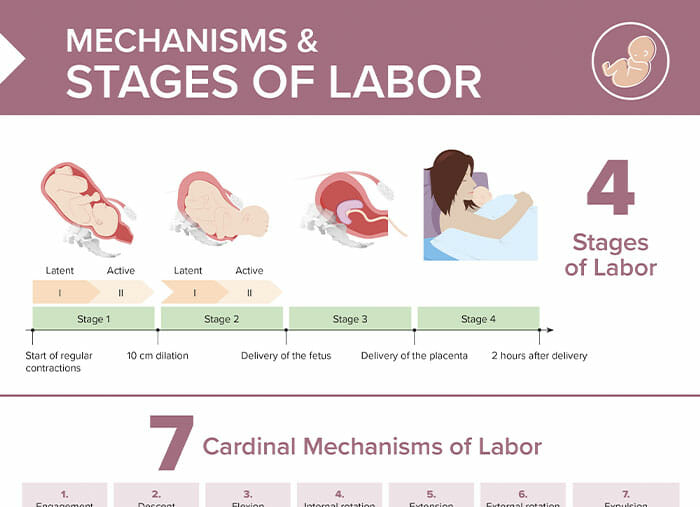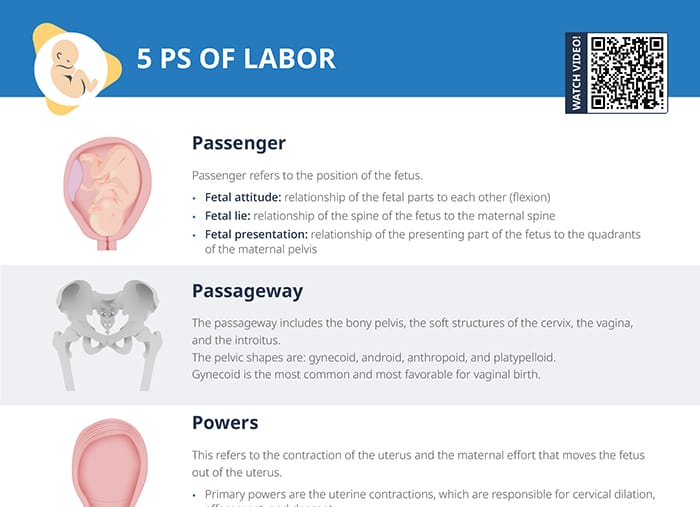What are the 5 Ps of labor?
“The 5 Ps of labor” is a mnemonic used to remember the key aspects of the labor process. Each of the Ps stands for an element of labor that contributes to the progress and will need to be assessed and monitored to make sure labor is progressing safely.
Related videos
#1: Passenger (fetal presentation and position)
The first P, “Passenger,” refers to the position of the fetus.
Fetal attitude
Fetal attitude describes the relationship of the fetal parts to each other. The amount of flexion in the fetal body, specifically the head (how close the chin is to the chest).
The more flexed the fetal head, the smaller the diameter as it passes through the pelvis → the easier.
Fetal lie
The fetal lie describes the relationship of the fetal spine to the maternal spine. It can be
- Vertical (both spines are in the same direction, could be breech or head-first)
- Oblique (fetal spine is at an angle to the maternal spine)
- Horizontal (fetal spine perpendicular to the maternal spine; vaginal birth not possible)
Fetal presentation
Fetal presentation is the relationship of the presenting part of the fetus to the quadrants of the maternal pelvis.
Types:
- Vertex (head coming first, most ideal)
- Breech (bottom coming first)
- Shoulder (shoulder coming first)
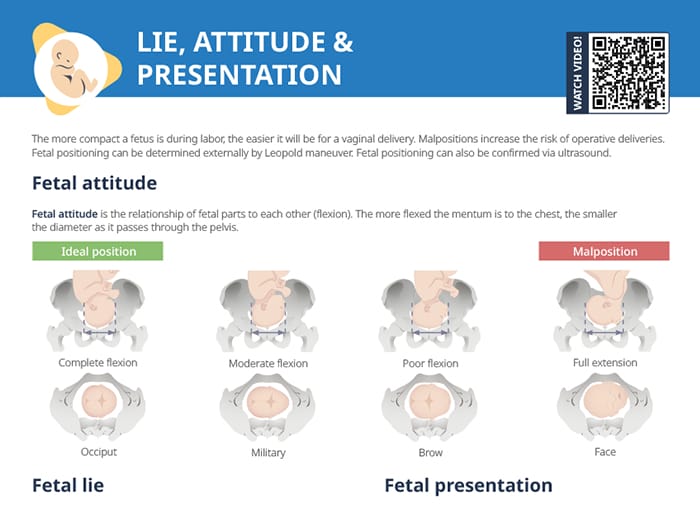
Download: Passenger Cheat Sheet
Concise overview of fetal lie, attitude, and presentation (normal positions and malpositions)
Related videos
#2: Passageway: pelvic shape
The passageway includes the bony pelvis, the soft structures of the cervix, the vagina, and the introitus (vaginal opening).
The pelvic shapes are:
- Gynecoid
- Android
- Anthropoid
- Platypelloid
Gynecoid is the most common and most favorable for vaginal birth.
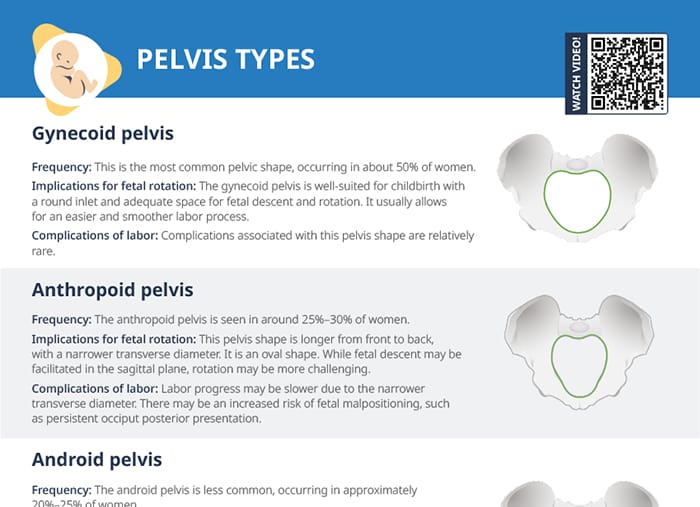
Download: Pelvis Types Cheat Sheet
The different types of pelvis shapes and their implications for labor and delivery
#3: Powers
This refers to the contraction of the uterus and the maternal effort that moves the fetus out of the uterus.
Ideally, contractions are close together and regular. Excessive contractions can lead to tachysystole, such as 5 contractions within 10 minutes.
Primary powers
Primary powers are the uterine contractions, which are responsible for cervical dilation, effacement, and descent.
Secondary powers
Secondary powers refers to the maternal pushing efforts.
Related videos
#4: Position
Position refers to the maternal position during labor and birth.
Tip: Help the client move. Maternal movement helps promote vaginal birth. Upright positions help internal fetal rotation.
Labor positions chart
Labor positions with epidural
Epidurals limit mobility but still allow for several labor positions, including lying on the back, side, on hands and knees, and being semi-seated. Even with an epidural, frequent position changes and movement as possible can help with labor progression.
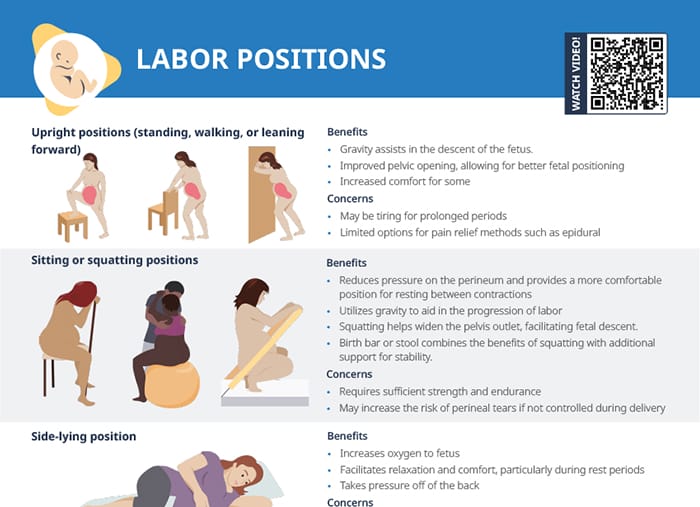
Download: Labor Positions Cheat Sheet
Overview of the primary labor positions with a summary of their benefits and risks
#5: Psyche
This aspect refers to supporting the pregnant client’s psychological adaptation to labor.
Ways to support birthing clients with their frame of mind during labor include:
- Education: childbirth classes, anticipatory guidance during labor
- Labor support: Continuous labor support increases vaginal birth rate. Build trust, frame labor pain as meaningful and productive, guide clients to their own decisions.
- Client-centered support: Respect cultural differences, respect client autonomy, and communicate effectively.
